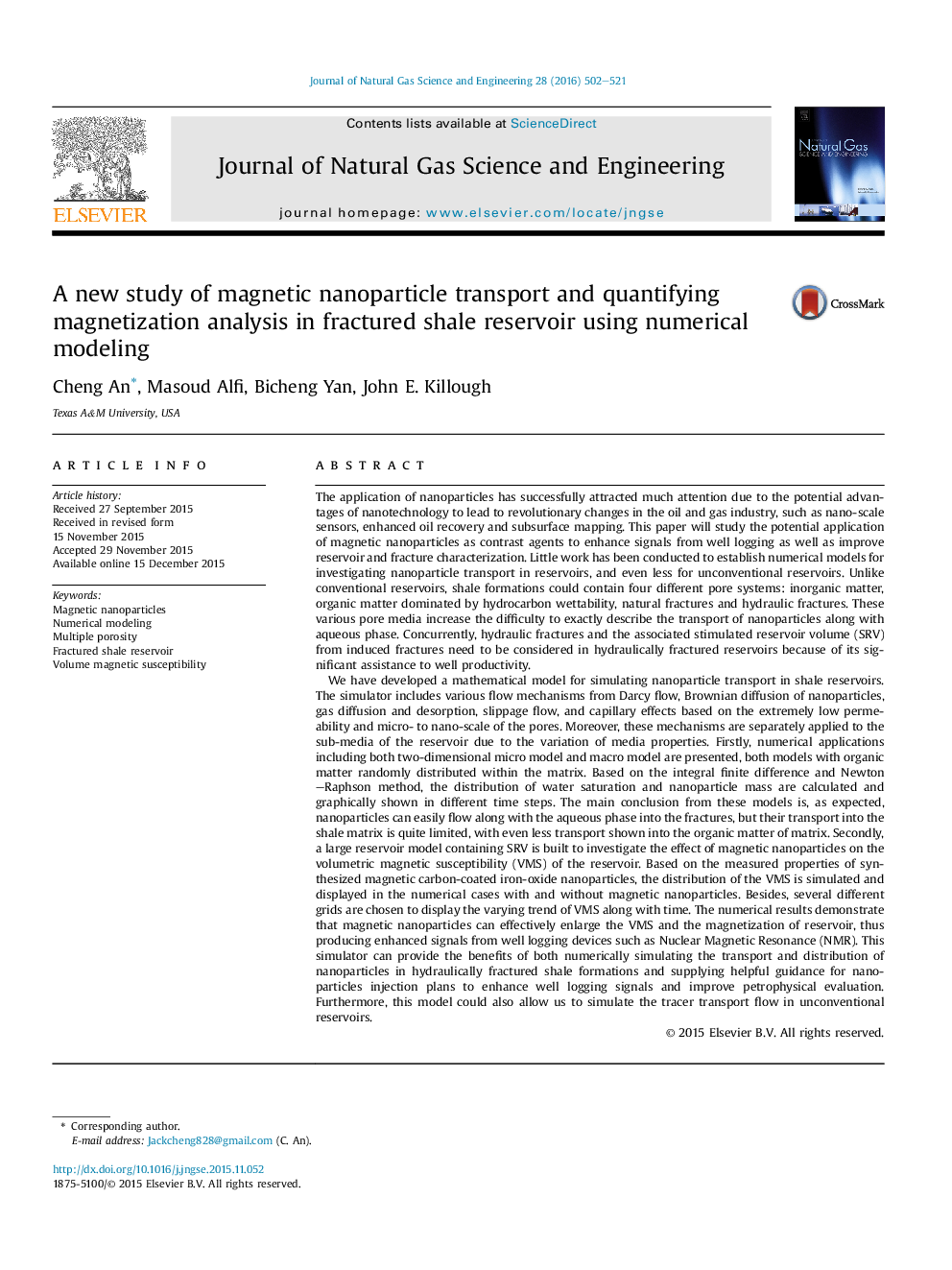| Article ID | Journal | Published Year | Pages | File Type |
|---|---|---|---|---|
| 1757308 | Journal of Natural Gas Science and Engineering | 2016 | 20 Pages |
Abstract
We have developed a mathematical model for simulating nanoparticle transport in shale reservoirs. The simulator includes various flow mechanisms from Darcy flow, Brownian diffusion of nanoparticles, gas diffusion and desorption, slippage flow, and capillary effects based on the extremely low permeability and micro- to nano-scale of the pores. Moreover, these mechanisms are separately applied to the sub-media of the reservoir due to the variation of media properties. Firstly, numerical applications including both two-dimensional micro model and macro model are presented, both models with organic matter randomly distributed within the matrix. Based on the integral finite difference and Newton-Raphson method, the distribution of water saturation and nanoparticle mass are calculated and graphically shown in different time steps. The main conclusion from these models is, as expected, nanoparticles can easily flow along with the aqueous phase into the fractures, but their transport into the shale matrix is quite limited, with even less transport shown into the organic matter of matrix. Secondly, a large reservoir model containing SRV is built to investigate the effect of magnetic nanoparticles on the volumetric magnetic susceptibility (VMS) of the reservoir. Based on the measured properties of synthesized magnetic carbon-coated iron-oxide nanoparticles, the distribution of the VMS is simulated and displayed in the numerical cases with and without magnetic nanoparticles. Besides, several different grids are chosen to display the varying trend of VMS along with time. The numerical results demonstrate that magnetic nanoparticles can effectively enlarge the VMS and the magnetization of reservoir, thus producing enhanced signals from well logging devices such as Nuclear Magnetic Resonance (NMR). This simulator can provide the benefits of both numerically simulating the transport and distribution of nanoparticles in hydraulically fractured shale formations and supplying helpful guidance for nanoparticles injection plans to enhance well logging signals and improve petrophysical evaluation. Furthermore, this model could also allow us to simulate the tracer transport flow in unconventional reservoirs.
Related Topics
Physical Sciences and Engineering
Earth and Planetary Sciences
Earth and Planetary Sciences (General)
Authors
Cheng An, Masoud Alfi, Bicheng Yan, John E. Killough,
